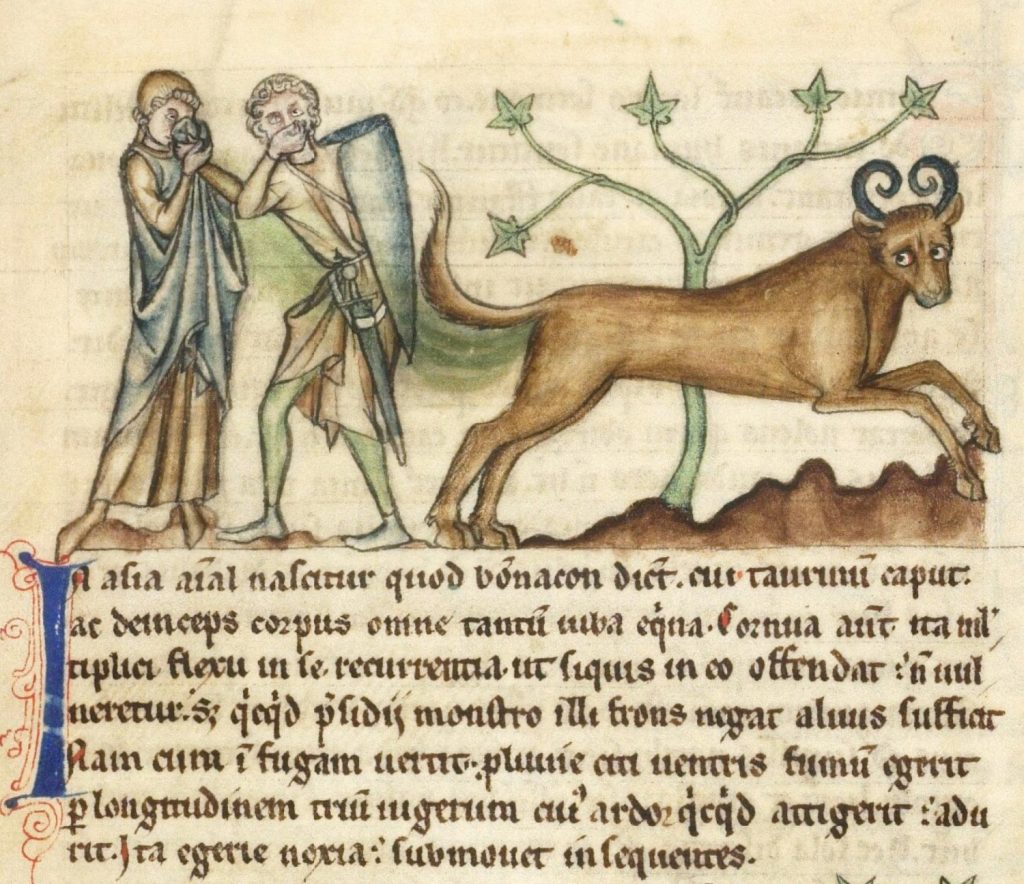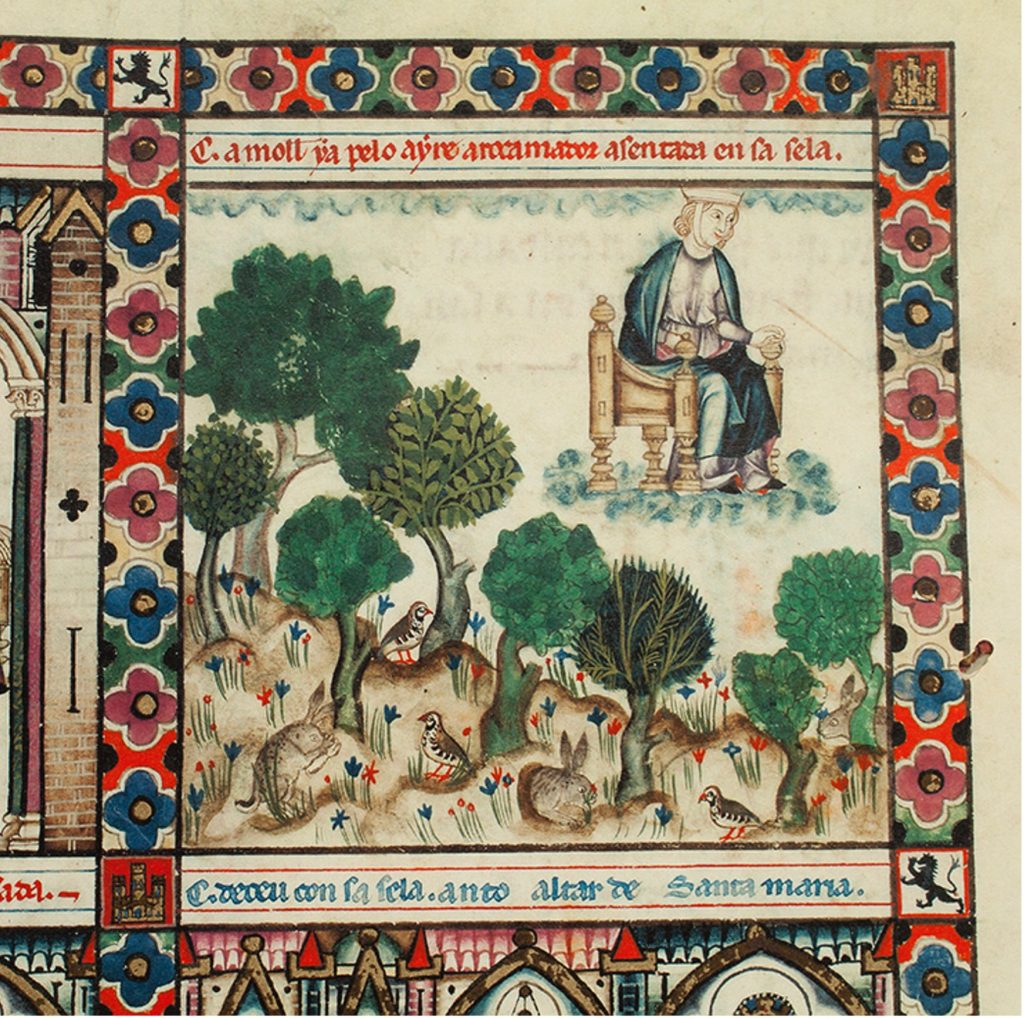

NB: This satirical post was shared on April Fool’s Day, 2025.
The Index of Medieval Art is pleased to introduce a new AI assistant to support users in their research on medieval iconography. The new IAI (Index Artificial Intelligence) aims to save researchers time and energy by aggregating search results into a digestible single image for use in your research paper or article. No more online filters to manipulate, index drawers to pull out, or search results to sort: simply tell IAI what you’re looking for and it will deliver an image that distills all the essential features of your search terms into the quintessential example for your next research project. And because it’s AI generated, no one will worry about copyright permissions.
Perhaps you’re looking for a traditional inhabited initial in a musical manuscript, say a representation of the blessing Christ inhabiting the initial B of “Benedictus.” You could of course search for existing images in the traditional way, using the Subject term “Christ, Blessing” or an Associated Text using an incipit like “BENEDICTA SIT….” That could yield a lot of search results! But who wants to comb through those? Let IAI do the job for you, and you could get something like this:

Here, nested cozily in a bright vermilion letter B with all the right kinds of leafy decoration, is a generously robed figure of Christ holding a book as he raises his hand in blessing. Is it perfect? Well… you know how sometimes figures in AI art come out with a couple of extra fingers, or arms, or maybe even faces? Let’s just say we’re still working out a few things.
In the meantime, maybe you’re interested in legendary beasts and looking for a medieval depiction of a fierce mythological animal, say one that uses massive horns and fire to defend itself from attackers. IAI has got you covered! Of course, you could dig around in the Subject Classifications network to see all the different kinds of animals you can actually find in the Index of Medieval Art, maybe checking out the “Mythological and Religious Creatures” category to find your fiery friend. But searching on your own is so old school. Let IAI do it for you! We know you’ll like what you see.

Big horns: check! Fire: check! Attackers repelled: check! Oh wait, you wanted the fire coming from its mouth? How was IAI supposed to know that? Maybe you should have searched on your own for this one, using the Subject term “Dragon.”
Let’s try something a little simpler. How about a medieval pilgrim? Pilgrimage to sacred sites, whether for penitence or to show devotion, was so important to medieval people that you won’t be surprised to learn there are more than thirty Index Subjects starting with “Pilgrim” in the database. But do you really want to take the time to look at all of those and then have to make decisions about which ones best suit your research needs? IAI has got your back. Let’s make it authentic by narrowing the parameters: we’ll ask for a female pilgrim on her way to the shrine of Our Lady of Rocamadour.

That’s a lady pilgrim all right, and the captions tells you she’s definitely on the way to Rocamadour. Yes, it does seem a little unusual that she’s flying there in a chair instead of riding a donkey, but of course if you’d wanted that kind of detail, you would have used the search filters for a Boolean search of the Subjects “Pilgrim” and “Donkey.” But since when were donkeys so important? IAI thinks this is a terrific way to go. You’ve never heard of armchair travel?
Even if IAI still has a kink or two to work out, we think you’ll love what it can do for you. Mental energy is precious; why devote so much of it to original image research when you can harness multiple terabytes of data and enough electricity per search to fully charge your phone just so IAI can come up with one fantastic image like these? Is IAI easy? You bet. Is IAI fun? Tell us, who doesn’t love flying chairs and flaming poo? Is IAI responsible? Now why would you ask us that? It’s not a self-driving car.